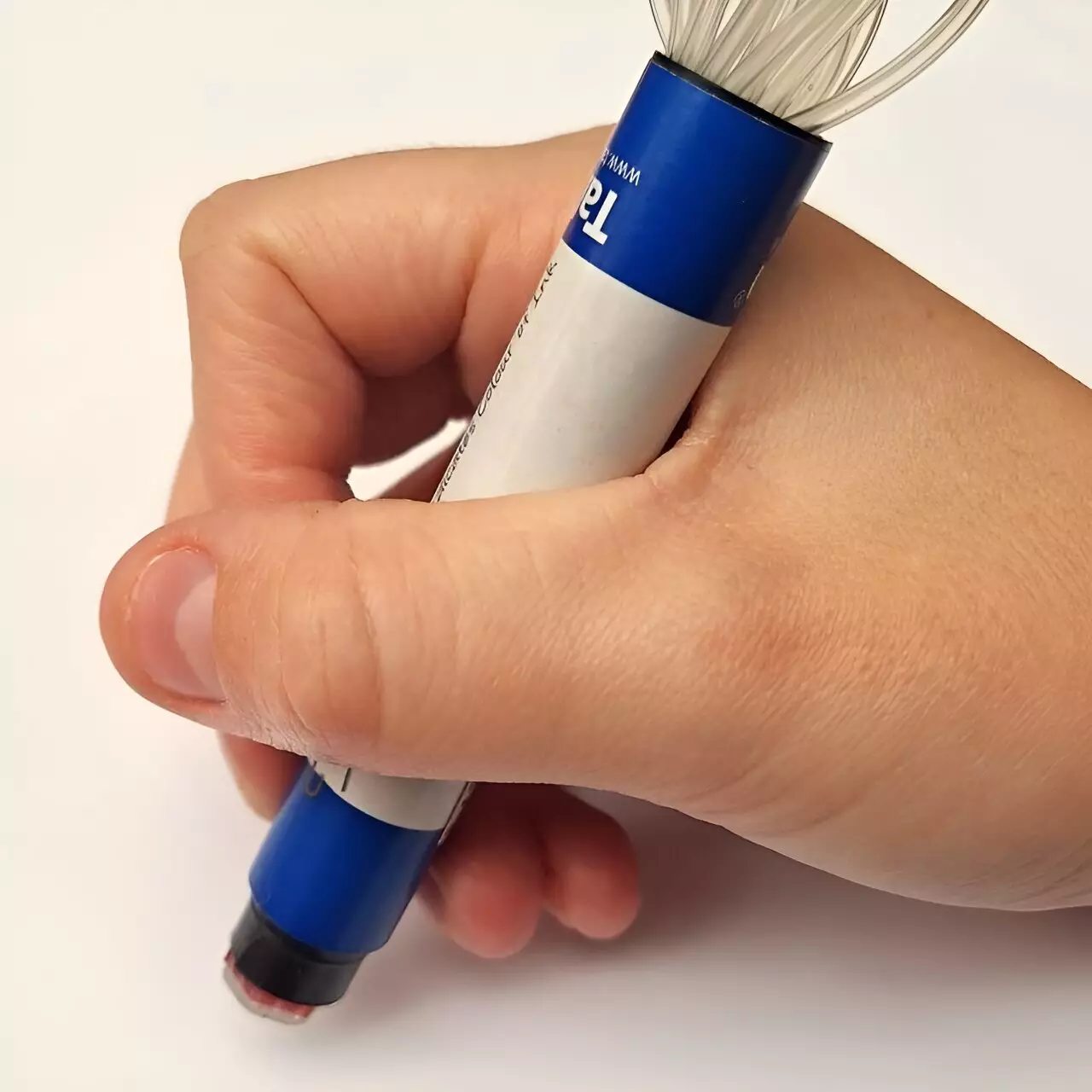Despite the technological advances of the modern age, the significance of Braille as a vital communication medium for the visually impaired has reached a critical juncture. Recent studies indicate a worrying decline in Braille literacy, a trend that perplexes many within the disability community. In stark contrast to the desire of visually impaired individuals to learn Braille, there remains a lack of adequate resources and instructional materials, particularly outside major urban areas. This gap in Braille education ultimately hampers the ability of individuals to engage fully with society and access vital information.
In a groundbreaking response to this challenging landscape, a team from the University of Bristol has pioneered a portable device named “Braille-tip.” This innovative hand-held tool is engineered to translate Braille into English text, thereby simplifying the learning process for potential Braille readers. With a sophisticated one-centimeter sensor embedded with 19 channels capable of accurately interpreting Braille, Braille-tip has shown promising results in initial assessments, boasting an impressive 84.5% accuracy rate.
The chief architect of this technological advancement, Dr. George Jenkinson, articulated the device’s purpose eloquently. He highlighted that “Braille-tip” aims not only to assist users in reading but also to foster independent learning. By integrating tactile feedback with digital translation, the device aspires to contribute meaningfully to the resurgence of Braille literacy, empowering users to enjoy the cognitive benefits associated with reading and writing.
At the heart of Braille-tip is a compact soft tactile sensor designed to collect tactile information from embossed surfaces. The device operates through fluid channels that transmit sensory data from 19 sensitive areas under a silicone membrane to a single camera, which then processes the information in real-time. Unlike other technologies relying on complex algorithms and deep learning, Braille-tip’s functionality is straightforward, adaptable, and user-friendly.
Dr. Jenkinson illustrated the utility of this device by recounting his own experiences: “I used the handheld device to read various Braille passages and scrutinized the accuracy of its processing. The direct way it related tactile cues to English text was impressive.” Its portability and simplicity hold promise for future applications, making Braille-tip not just a reading aid but also a comprehensive learning tool.
Learning Methods and User Experience
Braille reading is distinctly structured and demands a nuanced understanding of raised dots. Conventional techniques often involve using both the index fingers to navigate through text. In this context, Braille-tip can simulate the role of a leading finger, enhancing the user’s ability to read through practice. By serving as an assistive tool, the device enables individuals, especially newcomers to Braille, to build their skills and confidence in reading.
Dr. Jenkinson and his team recognize the paramount importance of cooperation with end users in refining their design. As the device evolves, the researchers underscore a co-design approach that merges user feedback with technical development. Such collaboration promises to yield a device that more accurately meets the needs and preferences of the visually impaired community.
Looking ahead, the team plans to conduct extensive user testing with the Braille-tip device, emphasizing the criticality of obtaining feedback from individuals throughout the development process. Dr. Jenkinson stressed the importance of this user-centered approach, stating, “A device grounded in the practical experiences and desires of its users will have a far greater impact on reality than one developed in isolation.” Observing how users interact with the device will guide future upgrades aimed at improving its reliability and accuracy.
The potential ramifications of Braille-tip extend beyond individual empowerment. In a society increasingly geared toward inclusivity, the incorporation of such a device in public spaces equipped with Braille—as found in transportation hubs, elevators, and ATMs—can bridge the gap for those who are either Braille illiterate or new to its learning experience. This capability paves the way for greater independence and self-sufficiency, allowing users to navigate their surroundings confidently.
The development of Braille-tip represents a significant leap forward in the efforts to enhance Braille literacy among visually impaired individuals. By employing innovative technology in a manner that aligns with the educational needs of users, this device not only revitalizes the importance of Braille but also may inspire a new generation of readers. As the research team continues to refine and evolve the technology, it holds the promise to transform not just individual capabilities, but society’s perception of literacy, accessibility, and inclusion.

